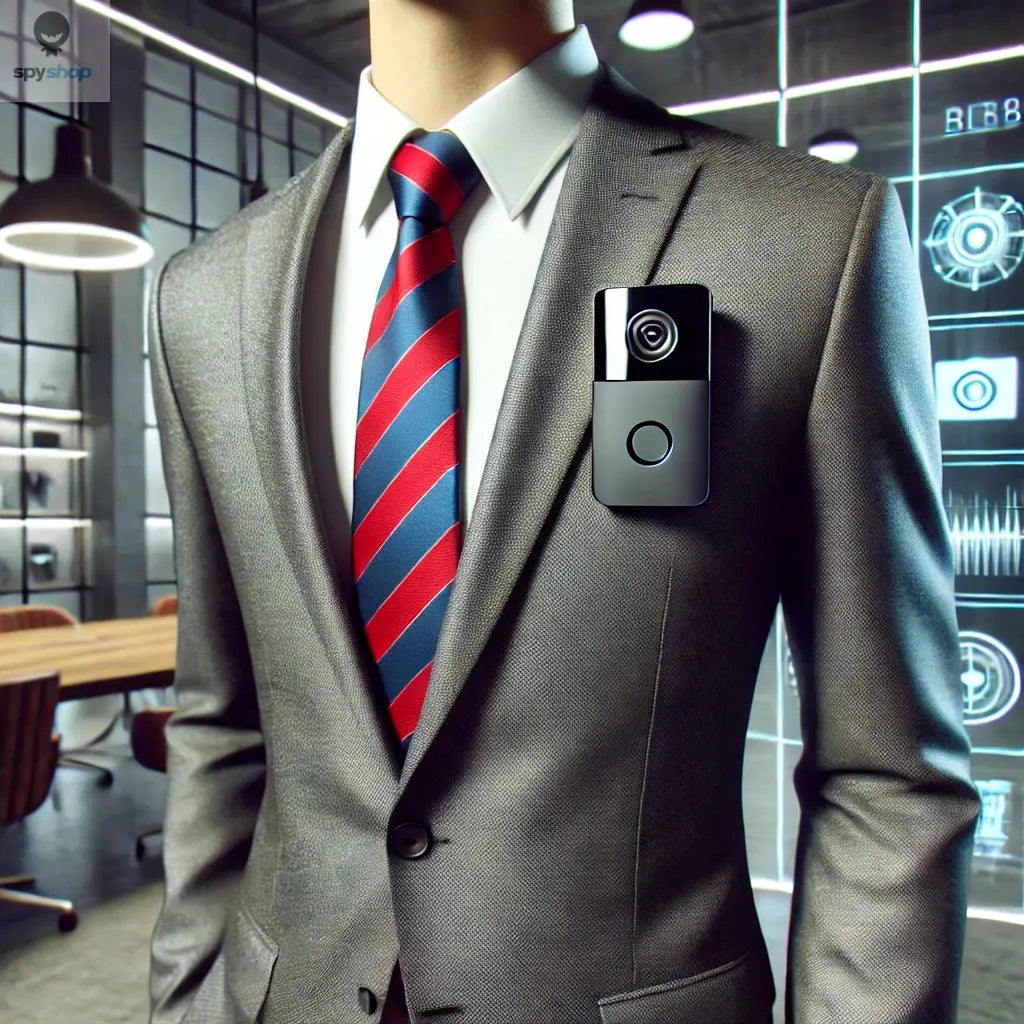
Modern Surveillance Redefined: The Story of Body-Worn Cameras
Close-up of a suit jacket with a red and blue striped tie, subtly concealing a body-worn camera
Tags: concealed cameras, surveillance innovation, wearable tech, law enforcement, ethical recording
Body-worn cameras, now seamlessly integrated into ordinary items like glasses, pens, and clothing, have revolutionized surveillance technology. Their transformation from clunky, rudimentary devices to sophisticated tools highlights remarkable strides in innovation.
From Concept to Reality
The roots of wearable cameras trace back to the mid-20th century when rudimentary "spy cameras" were introduced. These early versions focused solely on capturing still images and were bulky, conspicuous, and technologically limited. It wasn't until the early 2000s that wearable video cameras gained traction, driven by the miniaturization of electronic components.
Early Challenges
The first iterations of body-worn cameras were far from ideal. Large in size and cumbersome, they delivered low-resolution, grainy video, poor audio quality, and had extremely limited storage and battery life. They were tools of novelty rather than practicality, often failing to meet the demands of discreet recording.
The Game-Changer: Miniaturization
Advancements in microelectronics heralded a new era for body-worn cameras. Shrinking components allowed these devices to be embedded in common objects like buttons or watches, dramatically enhancing their appeal. At the same time, improvements in battery life, storage capacity, and HD recording capabilities transformed these cameras into functional tools for a variety of applications.
Body-Worn Cameras in Law Enforcement
The 2010s marked a turning point as police forces globally adopted body-worn cameras to enhance accountability and transparency. These tools became instrumental in recording unbiased evidence, monitoring public interactions, and improving training protocols. They brought new reliability to the narratives of law enforcement activities.
Cutting-Edge Features of Today
Modern body-worn cameras boast advanced features such as:
- High-definition recording: Ensures crystal-clear footage.
- Infrared and night vision: Enables recording in low-light settings.
- Wireless connectivity: Allows real-time streaming and cloud storage.
- Durable designs: Makes them suitable for challenging environments.
Ethical Considerations
While the technology has evolved rapidly, it brings with it critical ethical dilemmas. The ability to record discreetly risks significant privacy invasions, demanding stringent legal frameworks and ethical guidelines to govern their usage responsibly.
A Balancing Act
Body-worn cameras represent a powerful intersection of technology and surveillance, promising benefits ranging from personal security to public accountability. However, their application must be judicious, ensuring innovation aligns with ethical practices.


